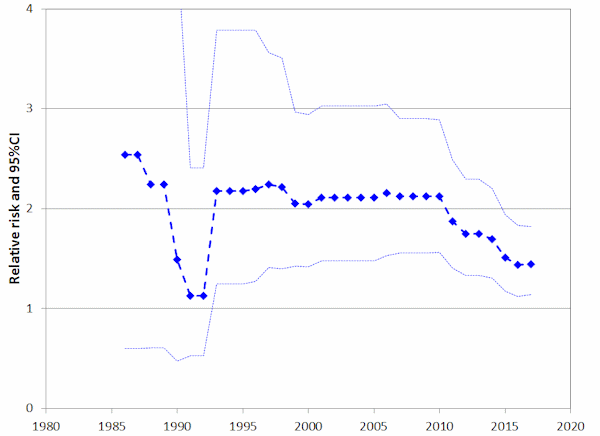06 January 2022
The CEGB Cohort Study tracks a cohort of workers in the UK electricity industry (the then nationalised Central Electricity Generating Board) and looks at cause of death for any associations with occupational risk factors, including EMFs.
This new paper investigated motor neurone disease (MND) and occupational magnetic field exposures in around 38000 workers, each with a full employment history between 1987-2018. This fuller employment history allows for a more accurate estimate of occupational exposure.
The data was analysed in three ways – cumulative lifetime exposure to magnetic fields; cumulative exposure more than 10 years from date of death (lagged); and cumulative exposure in the 10 years prior to death (lugged).
None of analyses show an overall increased risk of death from MND in relation to Magnetic Field Exposure. Increasing amounts of exposure do not show a dose response relationship to MND either
This study, with a negative result, does not support the hypothesis that MND is caused by Magnetic Field exposure. The magnetic field exposure estimates which are based on detailed job history and calculated exposure in each job give this study greater power to identify a relationship, including a lifetime dose response relationship. Further information about the study can be found here.
